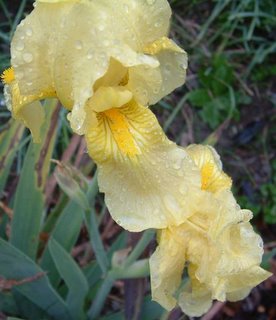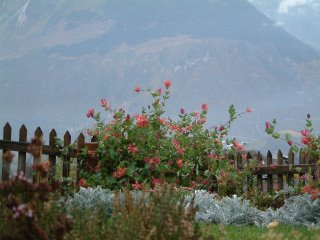Mulch Magic
 Plants like to snuggle down during the winter. In other words, they need a lovely duvet or quilt over them while they sleep through the cold months. In plant language: mulch.
Plants like to snuggle down during the winter. In other words, they need a lovely duvet or quilt over them while they sleep through the cold months. In plant language: mulch.
The word evokes memories of my father. While my mother worried over geranium and petunia blooms, my father the engineer was the one who oversaw the mechanics of the garden, from oiling and sharpening equipment to weeding out intruders and dividing the plants.
Mulching was one of his favourite chores. He approached it methodically. We would visit local farmers and order “organic materials”, as he called them (“Dead stuff," I thought). My father, who liked to resurrect his childhood on a farm, would ask about the price of hogs and how the corn crop had done that summer. I would hold my nose and watch the barn cats. Meanwhile, the far end of our garden would start to accumulate something that was eventually called mulch—mysterious mixtures of 20% this and 30% that.
The leaves fell off the large old trees around our house. I raked them into piles that resembled houses, with walls and spaces for doors and windows. Ellen Jane from next door and Peggy from down the street would join me and we played house. Sometimes we corralled an unsuspecting boy, Scottie, by building leaf mountains to jump into until they collapsed. Mostly we added rooms to houses until we were bored. My father would then cart the leaves to the mulch pile, which gradually took on the smell of a forest rather than a farmyard. Next to the pile lay a smaller subset of mulch called peat moss, a quasi-magical substance with a pungently sweet smell and almost spongy texture. We didn’t build it: it came from the store ready to use. His scientific explanation about it was absorbed into Irish fairytales about finding pots of gold under trees in the forest.
Saturday. My father put on a warm flannel jacket and pulled the collar tight. Under the now-bare trees he dispensed the mulch, well mixed. He tucked it around the edges of the plants with care, much as he did with my covers at bedtime in the old house grown cold at night. My quilt had patches of this and that which comforted me over the long winter, and I was sure the plants felt the same. Decades later I find myself responsible for tucking in a very large family of plants, and fretting about finding the right quilt for them. My father’s magic formula for mulch has remained a mystery, and farmer Bernard next door in Switzerland provides healthy dry manure, but no mulch ingredients. Pine forests rise above me in the Alps and their needles look like they should be useful, but what do I add them to?
Decades later I find myself responsible for tucking in a very large family of plants, and fretting about finding the right quilt for them. My father’s magic formula for mulch has remained a mystery, and farmer Bernard next door in Switzerland provides healthy dry manure, but no mulch ingredients. Pine forests rise above me in the Alps and their needles look like they should be useful, but what do I add them to?
The commercial solutions leave me muddled. Pine bark alone comes in all shapes, colors and sizes, not to mention prices. My encyclopedia suggests mixing in turf and sometimes sand, depending on what I'm covering. Do I need a mulch workshop, filled with dozens of bags and a cement mixer and measuring cups? Gardening is a perpetual, happy struggle to achieve balance. I try to balance short and tall plants in each patch, and less successfully, to balance the labour and the pleasurable time spent viewing my progeny. To make headway in the mysterious world of mulching I decided to begin with just the overcrowded three-year old irises, and the newly planted tulips.
Gardening is a perpetual, happy struggle to achieve balance. I try to balance short and tall plants in each patch, and less successfully, to balance the labour and the pleasurable time spent viewing my progeny. To make headway in the mysterious world of mulching I decided to begin with just the overcrowded three-year old irises, and the newly planted tulips.
From Schreiner's Gardens in Oregon, one of the world's largest iris growers:
"It is especially important to keep the Iris bed clean during winter and not allow dead leaves, etc. to remain around the plants.
After the first hard freeze, cut the leaves back to ground level and cover the rhizomes with a light sanitary protective mulch (straw for example)."
They also mention that soil, straw, pine needles, and leaves are all effective covers.



<< Home